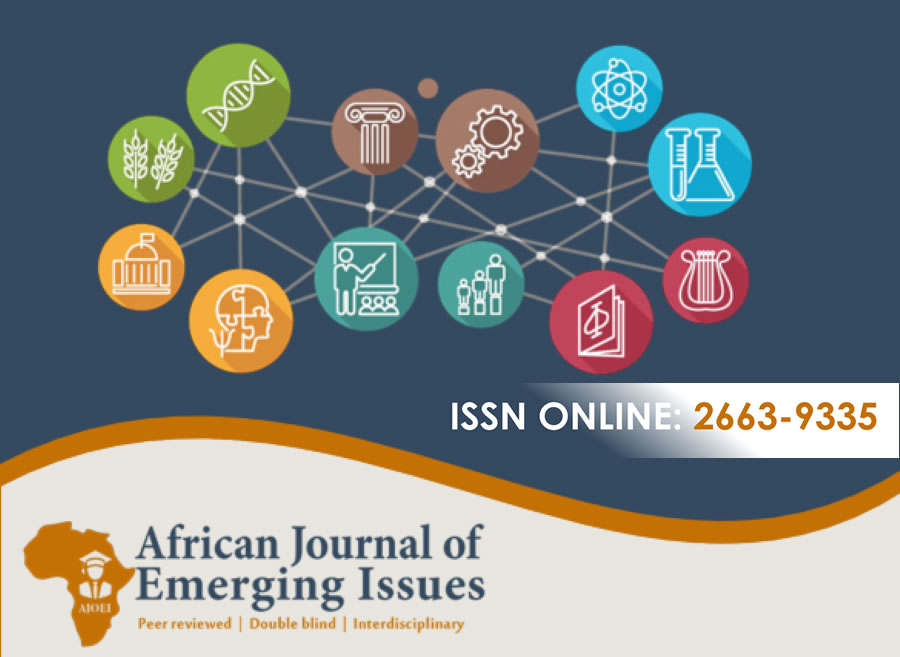COMPARISON AND CONTRAST BETWEEN FORMALIZATION AND SPECIALIZATION
Abstract
Purpose of the Study: The aim of this study is to explore the concepts of formalization and specialization within organizational structures and to examine how they relate to each other.
Methodology: This study is a literature-based review that analyses existing works on formalization, specialization, and organizational structures.
Findings: Formalization and specialization are two key aspects of organizational structures. Formalization involves the establishment of structured systems, rules, and procedures, whereas specialization is concerned with honing skills in specific domains. While formalization provides clear guidelines and processes, specialization allocates tasks to areas of expertise. The interaction between formalization and specialization is mutually reinforcing: formalization provides a unified direction, and specialization enables employees to contribute efficiently toward these aims. However, an organization that is high in one dimension does not necessarily excel in the other, leading to potential advantages and disadvantages.
Conclusion: While there is a relationship between formalization and specialization, an organization can focus on one without automatically excelling in the other. A balanced approach is necessary in today's competitive landscape, where organizations must be both structured and flexible.
Keywords: Comparison, Contrast Between, Formalization, Specialization
References
Balaji, M. S. (2010). Formalization and specialization of human resource practices. Talent Management Review, 1(1), 25–38. https://doi.org/10.1108/17409591011032292.
Barney, J. (2017). Organizational effectiveness: Performance within and across organizations. Routledge.
Bergman, P., & Morton, D. (2008). Career specialization and job security in the wake of the global financial crisis: A comparison of the US and Chinese labor markets. The Journal of Human Resource and Adult Learning, 4(2), 1-10.
Broadbent, J. (2021). High performance business: Setting and measuring high performance KPIs. KPI Library. Retrieved from https://kpilibrary.com/high-performance-business-setting-and-measuring-high-performance-kpis/
Daft, R., & Marcic, D. (2013). Understanding management (9th ed.). Cengage Learning.
Du Brin, A.J. (2020). Fundamentals of organizational behavior. Careswell: Bridgepoint Education, Inc.
Erduran, E., Pano, F., Sezgin, A. Y., Harmanci, C., Kizilgun, A., & Gulsun, B. (2018). Effective organizational structures and their effects on performance: An empirical study on SMES from Turkey. International Journal of Humanities and Organizational Studies, 2(2), 59–67.
Gharibi, M. (2020). Differences between formalization and specialization. Business management daily. https://www.businessmanagementdaily.com/48598/differences-between-formalization-and-specialization
Gomez, J. A. (2021). Differences between Formalization and Specialization. Retrieved from https://www.diffen.com/difference/Formalization_vs_Specialization.
Heidenhoff, G., & Lay, O. (2018). Managing change processes on a global scale in a multicultural project team: A case study. International Journal of Project Management, 36(4), 529-544.
Hirniak, M., & Mercer, S. (2020). Benefits and Challenges of Formalization in Organizations. Small Business Chronicle. https://smallbusiness.chron.com/benefits-challenges-formalization-organizations-4418.html.
Iltshishin, S., Hickin, C., & Salik, S. (2020). Impact of formalization, specialization and centralization on financial performance. Journal of Accounting & Financial Management, 4(3), 19-26. https://doi.org/10.20448/jafm.20200403.18.
Katayama, M. (2011). The impact of specialization versus formalization on organizational performance: the case of Japanese-style management. Asia Pacific Journal of Management, 28(3), 467-492.
Keen, C. (2017). The importance of having multiple dimensions in business practices. Harvard Business Review. Retrieved from https://hbr.org/2017/04/the-importance-of-having-multiple-dimensions-in-business-practices
Kristof-Brown, A.L., Zimmerman, R.D., & Johnson, E.C. (2005). Consequences of individuals' fit at work: a meta-analysis of persons-job and persons-organization fit. Personnel Psychology, 58(2) 281-342.
Mastrangelo, P. (2014). The rules of organizational effectiveness: Achieving superior performance with clarity and consistency. Business Expert Press.
Milano, A. J., Subramanian, A., Cohen, C. A., Edleston, I., Goldstein, E., & Hicksson, D. (2020). Leadership attributes for leading organizations in a digital age. Business Horizons, 63(6), 1047-1063.
Rullman, D. (2018). Specialization Strategy: How to Become an Expert in Any Field. Entrepreneur Press.
Sarika, K. (2013). Relationship between formalization and specialization in organization. Retrieved from https://www.indiastudychannel.com/experts/16240-Relationship-between-formalization-and-specialization-in-organization.aspx.
Scandura, A. (2009). Specialization: The Key to a Thriving Career. Administrative Sciences, 4(1), 36-44. https://doi.org/10.3390/admsci4010036.
Zacharakis, A.L., & Winter, S.G. (2017). The strategic role of formalization in the innovation process. Strategic Entrepreneurship Journal, 11 (2), 112-122. doi: 10.1002/sej.1233





